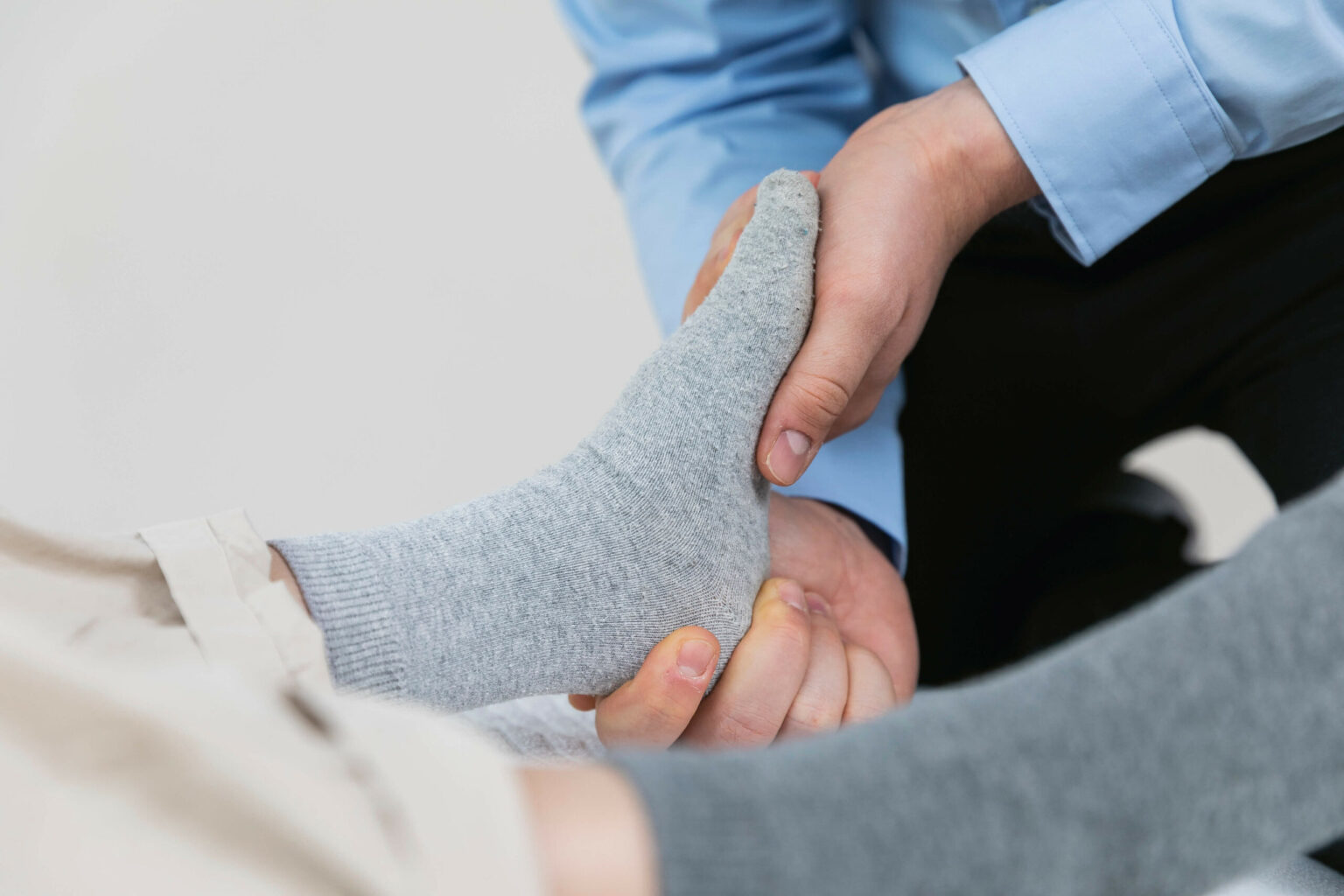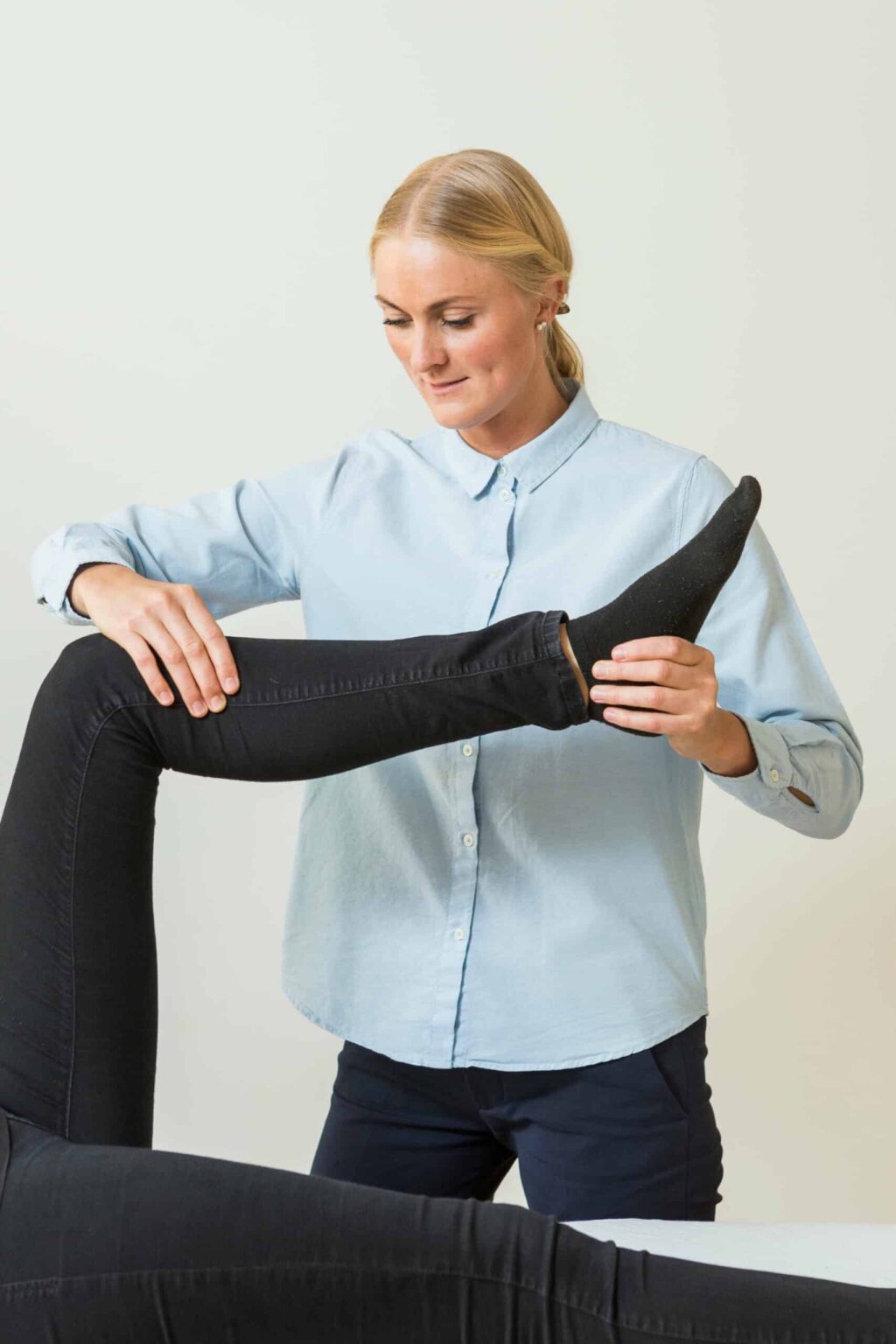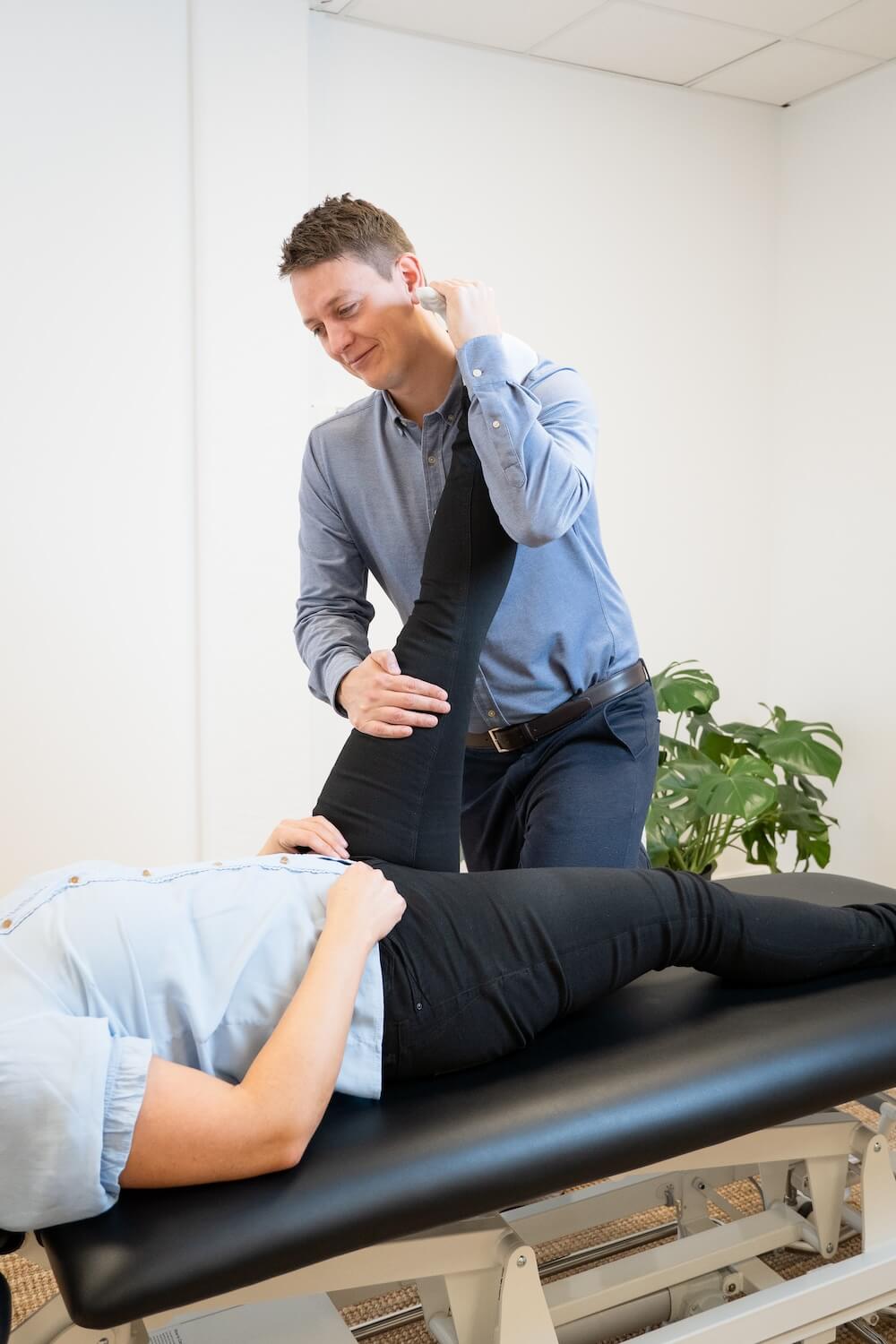We treat
Tenosynovitis
Learn more about tenosynovitis in the foot
What is tenosynovitis in the foot?
Tenosynovitis is an inflammatory condition (inflammation without bacteria) of our tendon sheaths. The condition is seen with and without simultaneous inflammation of the muscle tendons (tendinitis). Tendon sheaths are a type of tubular sheath that surrounds our muscle tendons where they are particularly exposed to friction; namely where the tendons cross the wrist and ankle joints. Tendon sheaths consist of connective tissue lined with a mucous membrane, which keeps the tendon lubricated and allows it to slide friction-free during movement.
Jump to section [Vis]
Symptoms of tenosynovitis in the foot
There are tendon sheaths on the front, inside and outside of the ankle joint, and it is therefore in these areas that the tendon sheath inflammation can occur.
When you have tenosynovitis, the tendon sheath is inflamed, and you will therefore experience one or more of the following typical symptoms of inflammation; warmth, redness, swelling, pain and/or decreased function. It can be difficult and painful to move the joint, so the pain can, for example, worsen if you tense the muscle against resistance or stretch the tendon.
Source: Sundhed.dk

Causes of tenosynovitis in the foot
Tenosynovitis in the foot is often caused by mechanical irritation of the tendon sheath (e.g. due to tight shoes or blows to the tendon sheath) or overload (e.g. starting running too quickly). The condition is also seen as a result of ligament damage around the ankle joint, e.g. after spraining the ankle.
Sometimes the cause must be found elsewhere in the body. As osteopaths, we therefore look at the body as a whole.
Traditional treatment of tenosynovitis in the foot
Although the condition can develop into a more chronic condition and cause long-term pain, it is typically relatively short-lived and disappears after days/weeks if you follow the advice for treatment:
Reduce mechanical irritation:
Consider, for example, whether the foot is being exposed to incorrect/excessive stress or whether your shoes are tight.
Peace and rest:
During the first week of acute tenosynovitis, it is important to keep the ankle joint at rest. In some cases, it may be helpful to use a support bandage to provide relief during the day.
Medicine:
Painkillers of the NSAID type (e.g. ibuprofen) have an anti-inflammatory effect and can thus have a calming effect on the inflammation in the tendon sheath. However, treatment should not exceed a few weeks, unless otherwise agreed with your doctor.
Massage:
Massage increases blood circulation to the area and can thus also contribute to healing.
Physiotherapy:
Individually tailored training of the muscles and tendons in the stressed area can contribute to healing and prevent future problems.
Acupuncture:
Acupuncture stimulates blood flow to the inflamed area around the tendon sheath and can therefore have a beneficial effect on tendon sheath inflammation.

What can you do yourself about tenosynovitis?
There are various things you can do yourself to relieve and alleviate your discomfort:
- Reduce mechanical irritation
- Calm and rest in the acute phase, possibly with the use of support bandages
- Medical treatment with NSAIDs (e.g. ibuprofen) for a short period of time for pain relief and anti-inflammatory effect.
- Light massage of the area.
Osteopathy and tenosynovitis
As osteopaths, we look at the body and all its systems as a whole and from this we try to find the underlying cause of the problem. During an osteopathic examination of a tendonitis in the foot, we will therefore examine the entire body. Below are some examples of causes that may underlie the development of tenosynovitis.
Mechanical causes
Local mechanical conditions in the foot/ankle region can contribute to the development of tenosynovitis, as incorrect posture and/or reduced mobility in one or more joints can place inappropriate strain on muscles and tendons. In addition, mechanical conditions elsewhere in the body, such as the pelvis or knee, can affect the ankle and thus also contribute to the development of tenosynovitis.
Neurological causes
The muscles in the lower leg receive their nerve supply from the sciatic nerve, which originates from the nerve roots in the lower back and sacrum. An impact on the nerve roots or the sciatic nerve can change the nerve signal to the muscles and thus cause an altered pull in the tendons. This can also contribute to the development of tenosynovitis in the foot.
Vascular (blood circulation) causes
An optimal blood supply to and from the injured area is the key to healing, as it is via the blood that the tissue is supplied with oxygen and nutrients and waste products are removed. Therefore, it is important that the “pump system” works. Here, the rib cage and our large breathing muscle play a central role. In addition, tightness along the course of the blood vessels can also affect circulation.

Physiological causes and osteopathic treatment
Certain conditions in the body, such as incorrect acidity and too much glucose (sugar), can create a fertile ground for inflammation to occur. Here, our diet and gastrointestinal system can play a role in relation to the chronic (persistent) inflammatory conditions. In these cases, one will typically experience inflammatory conditions in several different places in the body.
Inflammatory conditions in several different places in the body are considered in osteopathy to be an indicator that there are typically several of our systems (respiratory system, gastrointestinal system, psychological system, mechanical system, hormonal system, neurological system) that are affected, and therefore there is inflammation in several places. Here an osteopath will be helpful in being able to address where to intervene first.
Several lifestyle factors such as stress, sleep, diet and smoking can affect the body’s ability to heal and recover and are therefore also important to keep an eye on during treatment.

Often related injuries

Tenosynovitis in the foot

Swollen ankles

Sunken forefoot

Flat Foot (Pes Valgus)

Ankle and foot pain

Heel spur

